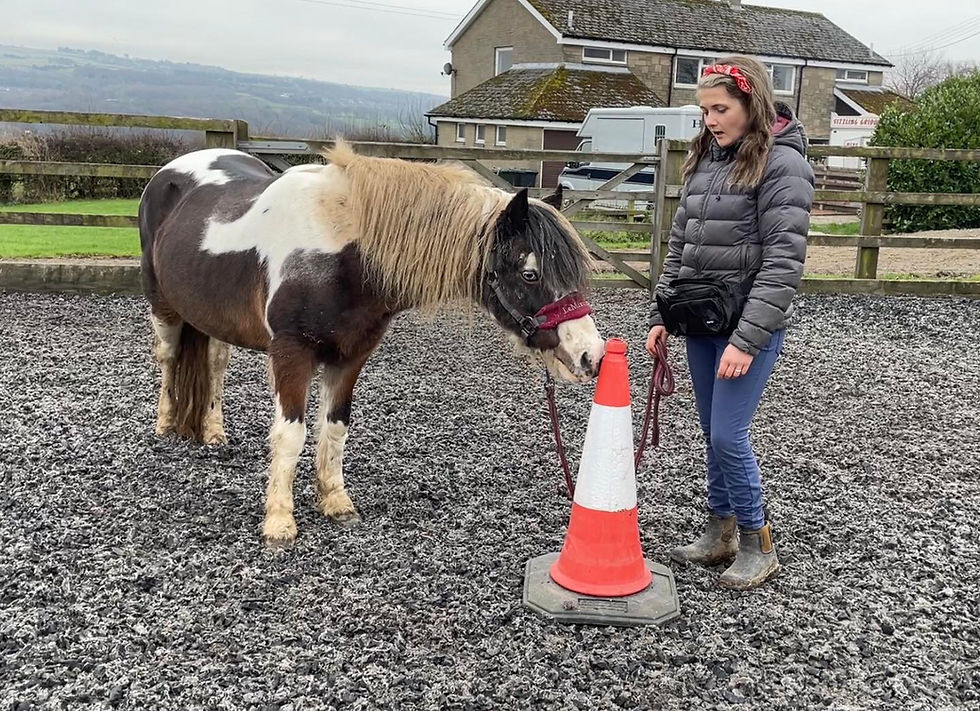Avoiding conflict in training and why I think its important
- Louise Stobbs
- Aug 23
- 3 min read
We can create so much unnecessary conflict when we’re training with our horses. I think a lot of it boils down to believing there’s a way we’re “supposed” to do things. And if the horse isn’t complying with our requests we have to keep battling through and not “letting him win”, otherwise we’re going to ruin our horse. Well here’s a secret, your horse isn’t even playing the game, there’s nothing to win.
Its curious how we all want to think our horses love spending time with us and working, yet when we look at the common ways of training its all about getting the horse to comply with things he is clearly not happy about. Instead of battling with our horses, I like to take the path of least resistance, and while we may get there slower, hopefully we’ll get there with our relationship in tact.
I want to give a few examples, how they are commonly dealt with and how I would approach them to give you some food for thought:
🐴 Your horse naps out hacking and really doesn’t want to walk past a certain point. You’ve been told to kick and growl at him or even smack him with the whip. His protests escalate and he starts running backwards, trying to spin and eventually rears. He is very stressed. Maybe sometimes you’re even told to get a stronger rider on to make him go. Even if we eventually get him to comply, he just had a really stressful, horrible experience. He learned that you don’t listen to him and next time he is worried he is likely to escalate to panicking and rearing much more quickly because he will be anticipating your behaviour.
When a horse starts to nap, I will do nothing and wait, if I can feel they’re getting more upset or they’re not willing to go after waiting for a few minutes, I will then get off and lead them past. This is how you build confidence, there is absolutely no need to push the horse into rearing and scrabbling about. The more your horse has positive experiences like this where you kept him feeling safe, the more confident he will be out in the world and the less likely he will be to nap in the future.
🐴 You’re trying to get your horse to walk over a tarp in a “spook-busting” session. As soon as your horse stops to look you start pulling him forward and refusing to release the pressure unless he steps towards it. Your horse starts to panic, tries to pull backwards and even rears to try to get away. Eventually he realises there is no way out and walks over the tarp. None of this is confidence building, he just learned you don’t listen or help him when he is scared, he definitely isn’t having fun.
Instead we could let him sniff around the tarp as close as he is comfortable with, not putting pressure on. Let him investigate in his own time and if he wants to move further away let him. The explosive behaviour comes from the pressure. There are so many ways to low-key desensitise horses to things that can be fun for them too that don’t involve applying pressure until they comply. I love watching their curiosity build. Keeping everything calm and low pressure builds confidence and positive associations with new things instead of fearful ones.
There is so much more to training than achieving compliance. Every experience your horse has shapes his relationship and associations with you and the world around him, which in turn affects his physical body. Even if we decided we didn’t particularly care about our horse’s feelings, all of the bracing and stress is no good for their physical development either. You can’t have one without the other.
There is absolutely no place or need for high-stress and explosive behaviour in training. I don’t find it funny or cool and neither does your horse. If we take a step back and really start to question why we are being told to do things a certain way, we will often find the reasoning doesn’t make any logical sense once you understand how horses learn. 🐴




Comments